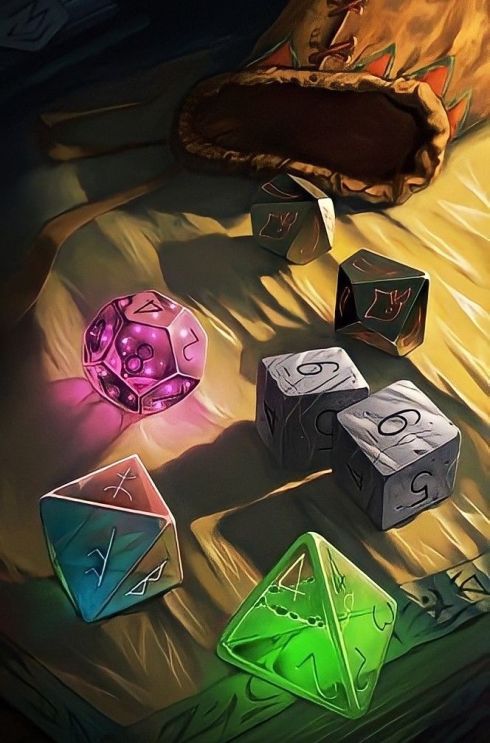Difference between revisions of "Self-play: a D&D Tutorial"
Tao alexis (talk | contribs) (→Set-up) |
Tao alexis (talk | contribs) (→Set-up) |
||
| Line 16: | Line 16: | ||
|- | |- | ||
| '''[[Strength (ability stat)|Str]]''': 18<br>'''[[Intelligence (ability stat)|Int]]''': 8<br>'''[[Wisdom (ability stat)|Wis]]''': 12<br>'''[[Constitution (ability stat)|Con]]''': 17<br>'''[[Dexterity (ability stat)|Dex]]''': 13<br>'''[[Charisma (ability stat)|Chr]]''': 9 || '''Gender''': male<br>'''Class''': [[Fighter (class)|fighter]]<br>'''Race''': [[Dwarf Race & Physiology|dwarf]]<br>'''Age''': 18<br>'''Height''': 3 ft. 10 in.<br>'''Weight''': 149 lbs. || '''Proficiencies''': battle axe,<br>warhammer, dagger,<br>light crossbow<br><br>'''[[Armour Class|Armour class]]''': 7<br>'''[[Hit Points|Hit points]]''': 21 | | '''[[Strength (ability stat)|Str]]''': 18<br>'''[[Intelligence (ability stat)|Int]]''': 8<br>'''[[Wisdom (ability stat)|Wis]]''': 12<br>'''[[Constitution (ability stat)|Con]]''': 17<br>'''[[Dexterity (ability stat)|Dex]]''': 13<br>'''[[Charisma (ability stat)|Chr]]''': 9 || '''Gender''': male<br>'''Class''': [[Fighter (class)|fighter]]<br>'''Race''': [[Dwarf Race & Physiology|dwarf]]<br>'''Age''': 18<br>'''Height''': 3 ft. 10 in.<br>'''Weight''': 149 lbs. || '''Proficiencies''': battle axe,<br>warhammer, dagger,<br>light crossbow<br><br>'''[[Armour Class|Armour class]]''': 7<br>'''[[Hit Points|Hit points]]''': 21 | ||
| + | |- | ||
| + | | colspan="3"|'''Equipment:''' battle axe, dagger, studded leather armour, basic clothing, sufficient food, 25 ft. of rope, two small sacks, backpack, belt pouch, two belts, cotton bandage, flint. | ||
|} | |} | ||
Revision as of 03:05, 30 May 2024
This page, presenting an example of randomly generated self-play (with exceptions), has been created to demonstrate the "house rules" written and developed in this D&D wiki. These rules and their interpretations have undergone extensive refinement over years of play and contemplation, with a primary objective of restricting player actions — while in some cases allowing new opportunities for advancement. Similar to other games, Dungeons & Dragons must adhere to the fundamental principles of game mechanics, choices, and consequences. Rules should not be malleable or open to convenient reinterpretation to guarantee player success. In gameplay, boundaries must be respected. Success is attained by making informed decisions within the confines of the game's limitations and embracing the risks, including the potential for failure. My objective with this demonstration is to showcase that this approach can yield a positive and captivating experience.
Contents
At the outset, the goal is to create an example that integrates only those essential rules that are needed for combat situations, along with guidelines for the management of players in dungeons. A significant portion of these rules are very different from any version of D&D that exists outside this wiki. Additionally, many rules with which later edition players are familiar do not exist here — for example, the ability to roll for perception to gather information about the surroundings, does not exist. Those who wish to retain their cherished but discarded rules are free to incorporate them into their own campaigns, while benefiting from the mechanics outlined here.
As the tutorial advances, further elements and rules will be gradually introduced and elaborated upon, without a fixed endpoint in mind. Similar to the organic evolution of a long-term D&D campaign, the aspiration is that as new rules are integrated into the wiki, they will also find their place within this ongoing demonstration.
Set-up
To begin, no specific place in the world setting needs to be addressed here. Instead, we start by introducing two player characters, Arliss and Bertrand, who at the start of this campaign are approaching a subterranean entrance. However, before we can proceed with their journey, we need to create their characters. This is done by consulting with the character creation page, which outlines how new PC's are generated. For our purposes here, we'll perform only those elements related to each character's ability stats, character class, race, weapon proficiencies, age and basic equipment. As neither character is a spellcaster, we need not at this time concern ourselves with the acquisition of spells.
Since the process of creating characters is thoroughly described through these links, we'll proceed by presenting both Arliss and Bertrand as they are at the inception of our fictional campaign. When it comes to decisions regarding class, race or weaponry for each character, we should adopt the perspective of playing both sides of a chess game. Just as we, in our role as the Dungeon Master, readily determine the weapons carried by enemies without hesitation, here, in our dual role as both DM and player, we can similarly make choices for Arliss and Bertrand. This approach also ensures that specific elements of the game are represented, aligning with the tutorial's objective.
| Abilities | Traits | Combat |
|---|---|---|
| Str: 18 Int: 8 Wis: 12 Con: 17 Dex: 13 Chr: 9 |
Gender: male Class: fighter Race: dwarf Age: 18 Height: 3 ft. 10 in. Weight: 149 lbs. |
Proficiencies: battle axe, warhammer, dagger, light crossbow Armour class: 7 Hit points: 21 |
| Equipment: battle axe, dagger, studded leather armour, basic clothing, sufficient food, 25 ft. of rope, two small sacks, backpack, belt pouch, two belts, cotton bandage, flint. | ||
